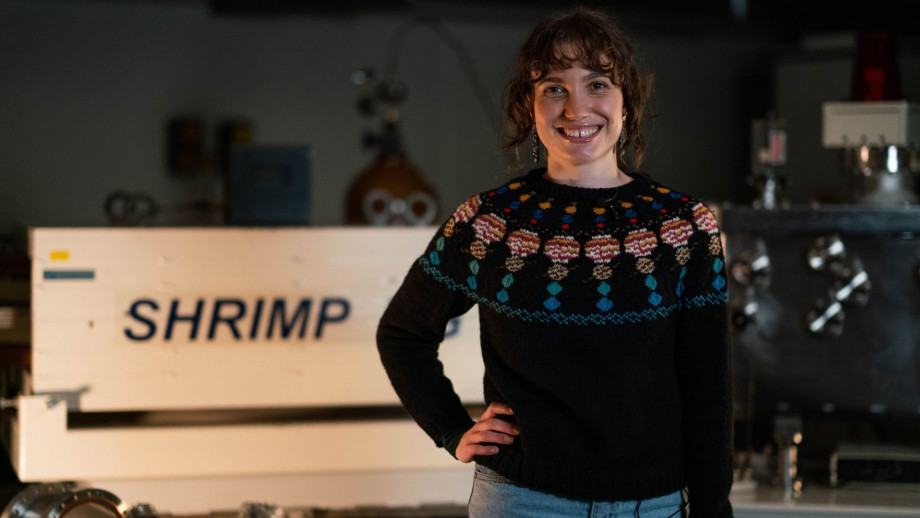Planetary purler: ANU student’s knitting creation goes viral

PhD student Rachel Kirby has been knitting for about 10 years, but her latest creation is out of this world.
She has woven together two of her passions - knitting and space - to design a solar system jumper inspired by her PhD and it's a purler!
Kirby has been interested in space and rocks since she was a kid and is now studying planetary geology and cosmochemistry at the ANU Research School of Earth Sciences. As part of her PhD studies, Kirby examines strange iron meteorites found on Earth to unravel the mystery of how they were formed.
"They don't fit into our current models of how iron meteorites formed, which is in the cores of planets that were then broken up and eventually fell to Earth," she says. "I've also been looking at the relationships between different asteroids and meteorites, as well as what happens when they impact each other."
In her limited free time, Kirby enjoys knitting to relax. While she has a few jumpers under her belt, it's the first time she's designed her own. Her focus was on getting the shape of the jumper right, but she also decided to have some fun and add a solar system pattern.
"I love knitting jumpers and I thought I would give designing one a go," she says. "Designing jumpers is not just about the kind of pictures and the colours, it's also about the shape. This was actually a practice jumper to see if I could get that right."
The jumper took about a month to make and was finished just in time for Canberra's chilly winter. The solar system of eight planets is repeated 16 times around the top of the jumper and keen observers may notice some other astronomical additions.
"I included the asteroid belt and the Kuiper Belt," Kirby says. "So, it goes Mercury, Venus, Earth, Mars, and then the asteroid belt, then the giant gas planets and then the Kuiper Belt.
"I really wanted to include those because I study meteorites. Studying rocks from space is how I find out how planets form and understand how our solar system formed."
The asteroid belt between Mars and Jupiter is home to millions of asteroids and the dwarf planet Ceres - the largest object in the main asteroid belt. The Kuiper Belt is a massive region, much larger than the main asteroid belt, in the outer solar system.
"Most of our knowledge comes from meteorites that have come from the asteroid belt, so it was important that I included those," Kirby says
Kirby posted her finished creation on Twitter and was blown away by the response - the post generated thousands of reactions from knitters, scientists and space-lovers alike. Omitting Pluto sparked some controversy ("I stand by my decision!") but Kirby also had many requests for the pattern, which is currently just a scrawl in her notebook.
"It's been a fun, unexpected science communication tool," Kirby says. "Some of the people who have asked for the pattern have been science teachers, as well as people who love space and I really like that."


